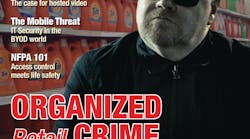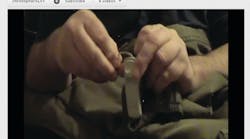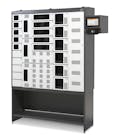The state of the loss prevention industry: 2012 update
We recently completed our 24th Annual Retail Theft Survey with 24 major retail companies participating, representing 18,518 stores, with retail sales exceeding $589 billion in 2011. The survey participants were all large retail companies (department stores, mass merchants, big box) who practice true loss prevention strategies, yet they still apprehended over 1 million shoplifters and dishonest employees in 2011, and recovered more than $161 million from those apprehensions.
In 2011, both the apprehensions and recovery dollars from shoplifters and dishonest employees rose; up 5.8% and 11.4% respectively. While shoplifter apprehensions rose 6 % and dishonest employee apprehensions rose 3.3%, the recovery dollars from these apprehensions was up 13.9% for shoplifters and 5.6% for dishonest employees. It should also be noted that shoplifter apprehensions and recovery dollars have increased in eight of the past 10 years. The seriousness of retail theft is a much greater problem than many people realize. These theft losses are driving retail prices higher and putting some stores out of business.
Below are some of the highlights from our 24th Annual Retail Theft Survey:
Shoplifting
• Apprehensions: Survey participants apprehended 1,005,003 shoplifters in 2011, an increase of 5.9% from the prior year.
• Recoveries: Dollars recovered from shoplifting apprehensions totaled over $113 million in 2011, a 13.9% increase from 2010. This was the 9th increase in shoplifting recovery dollars in the past 10 years.
• For the 15th consecutive year, dollars recovered from shoplifters where no apprehension was made (over $37 million) increased. In 2011, this increase was a substantial 13.5%.
• Case value: The average shoplifting case value in 2011 was $113.30, which was an increase of 7.5% from 2010’s average case value.
Employee Theft
• One out of every 36 employees was apprehended for theft from their employer in 2011. (Based on comparison data of over 2.8 million employees.)
• Apprehensions: Survey participants apprehended 71,505 dishonest employees in 2011, up 3.3% from 2010.
• Recoveries: Dollars recovered from dishonest employee apprehensions totaled over $47 million in 2011, an increase of 5.6% from 2010.
• Apprehensions: 69,373 dishonest employees were apprehended in 2010, down 0.4% from 2009.
• On a per case average, dishonest employees steal almost six times the amount stolen by shoplifters ($665.77 versus $113.30).
• The average dishonest employee case value in 2011 was $665.77, a 2.29% increase over 2010’s average case value ($650.84).
We asked our survey participants what they thought was the cause(s) behind the increase in shoplifting apprehensions and recovery dollars in 2011 and they contributed the following to increased shoplifting activity:
• Increased Organized Retail Crime (ORC) activity
• Poor economy is causing more shoplifting to take place
• Less store supervision and staffing
• Better training and awareness of LP staff and employees
• More open selling display strategies
We also asked or survey participants what they thought was the cause(s) behind the increase in employee theft apprehensions and recovery dollars in 2011, and they contributed the following to increased employee theft activity:
• Increase focus on specialized investigations
• Enhanced detection strategies
• Improved LP investigative training and interviews
• Less store supervision
• Poor economy is causing an increase in theft
How can companies reduce their vulnerability to shoplifting and internal theft? Listed below are a few suggestions:
Shoplifting:
• Provide good customer service: Shoplifters want and need privacy; so take it away from them. When they respond "I'm just looking," teach employees to say "Ok great, I’ll keep my eye on you in case you need any assistance.” Honest customers are ok with this (you are there if they need help), and this is the last thing a shoplifter wants to hear.
• Have employees walk the sales floor: Keep visible, and keep displays neat and organized (so missing items can be more easily noticed).
• Have good sight lines on the sales floor: Do not block the view of high-value and highly popular items, and keep these items near employee work areas.
• Limit items on sales floor: Limit the number of certain items (high-value, highly pilferable) placed on the sales floor. This will reduce vulnerability to large losses of these items and make it easier to identify missing items.
• Use technology: Such as EAS (electronic article surveillance), merchandise alarms, CCTV, ink/dye tags, product tie-downs, and bulky packaging. Also ensure policies/procedures regarding technology are adhered to.
• Know your merchandise: Especially highly popular items, high value items, what's stolen most often and what’s easily stolen. Study why items are taken, evaluate their locations and packaging – then make changes.
Internal Theft:
• Effective pre-employment screening process: The first step to controlling employee theft starts at the point-of-hire; do not hire the "bad apple." A thorough pre-employment screening process including, reference checks, "honesty testing," SSN trace/verification, criminal background checks, and drug testing is most important. Money spent up-front in the screening process to identify 'quality' employees will result in savings from reduced turnover and losses.
• POS exception monitoring: Use a POS exception based monitoring program to quickly identify possible fraudulent transactions at the point of sale (ie. excessive refunds or voids; refunds or voids before or after store hours; .etc.).
• Auditing for compliance: Ensure consistent compliance to company policies and procedures by conducting loss prevention/shrink audits on a regular basis. By reducing the opportunity, you reduce the chance of theft/loss.
• Training and awareness: Invest in loss prevention training and awareness programs for all employees, and a reward program for employees who report dishonest activities.
• "Back to Basics": Ensure "LP basics” are in place and adhered to at all times:
- Door controls (OH doors locked and exit doors alarmed)
- Trash controls (Monitored, supervised and dumpster locked)
- Package/bag checks (conduct whenever an employee exits the location)
- POS controls (two people witness and verify refunds and voids)
About The Author: Mark R. Doyle, is President of Jack L. Hayes International, Inc., and has over 25 years experience in the loss prevention field. He has consulted with some of the finest retail, wholesale and manufacturing companies in the world. Hayes International, Inc. has been in the Loss Prevention/Shrinkage Control consulting business for over 30 years, and is recognized on an international level as the foremost loss prevention and inventory shrinkage control consulting firm in the world.




